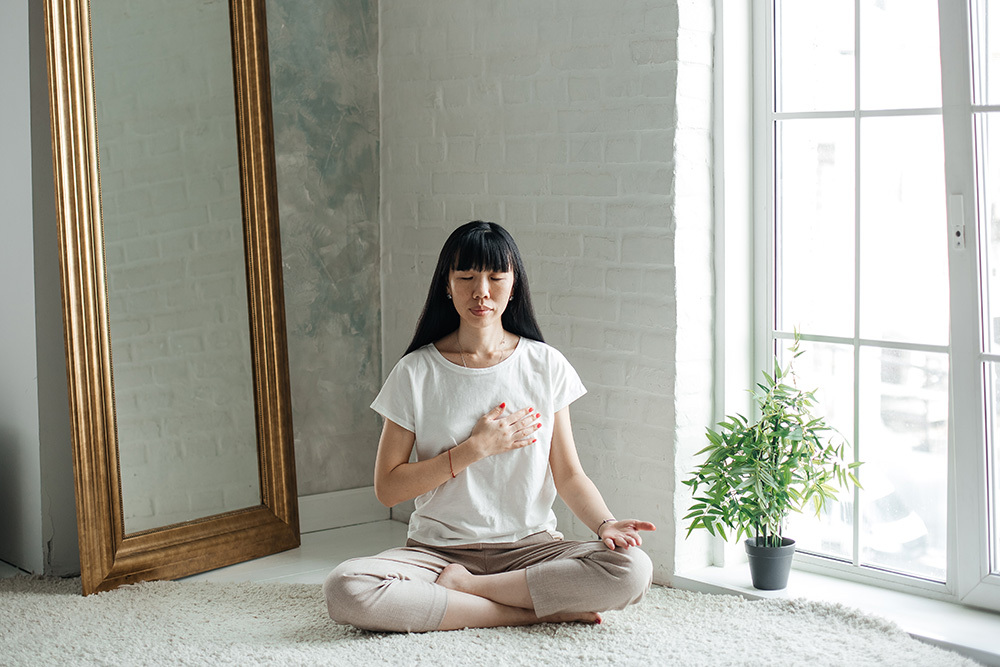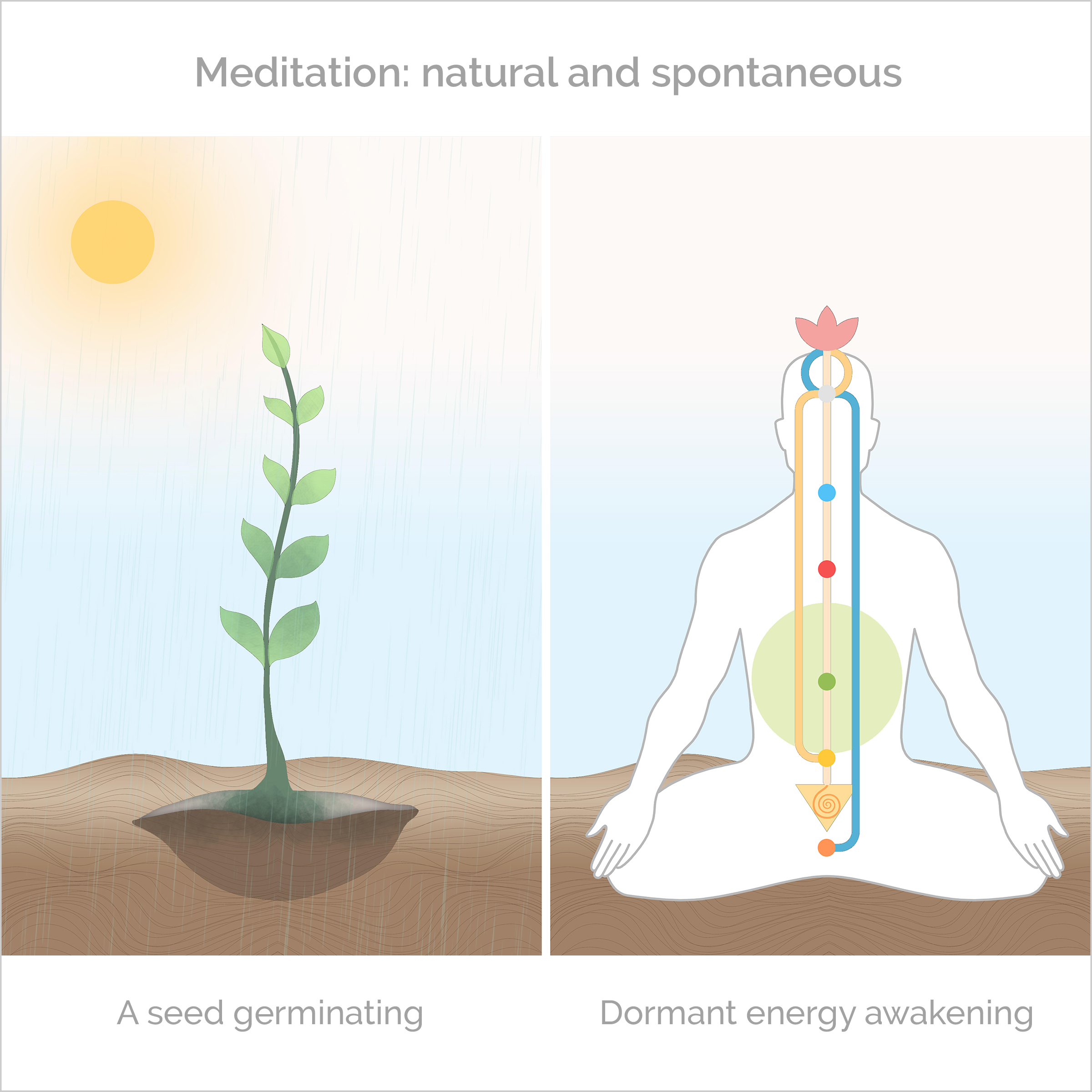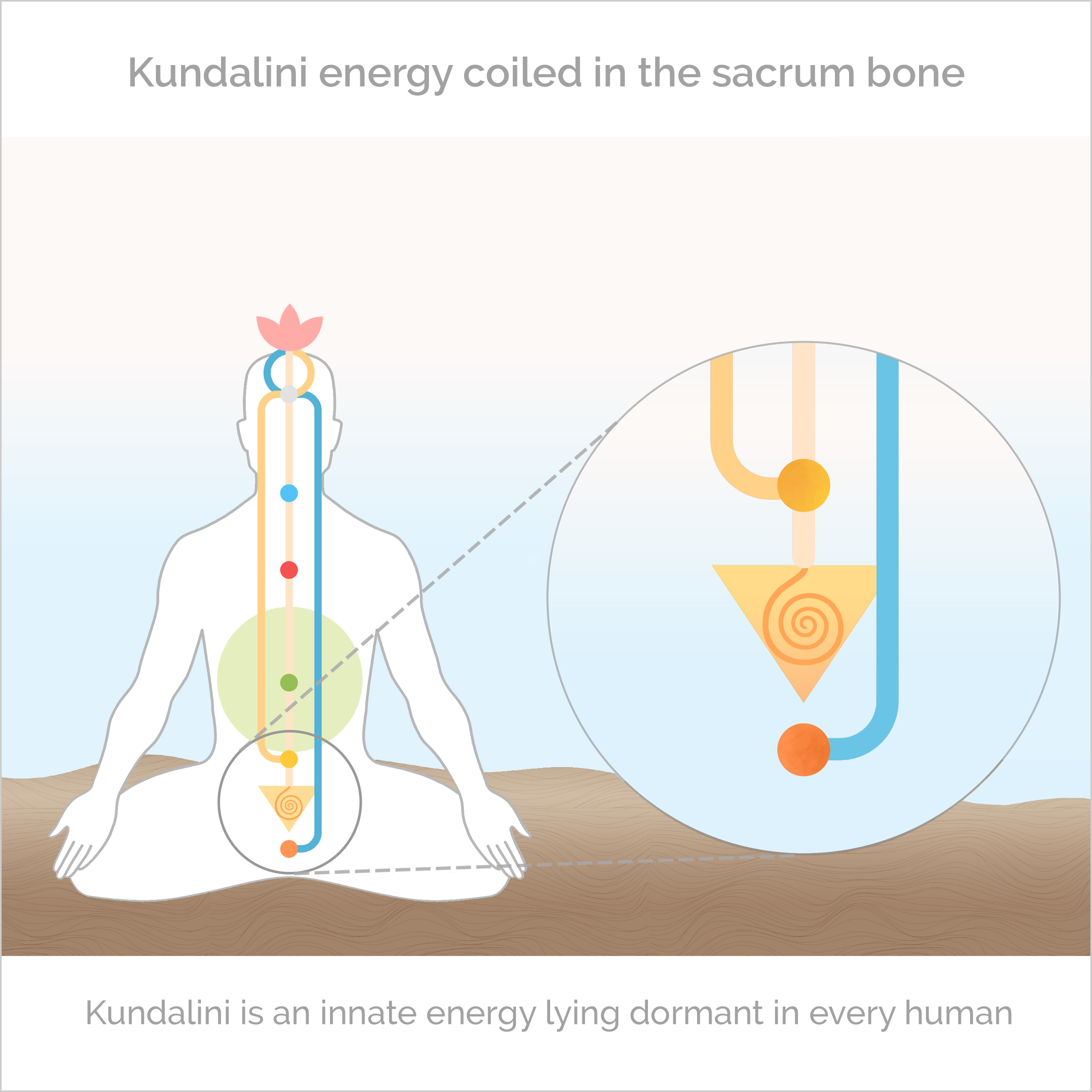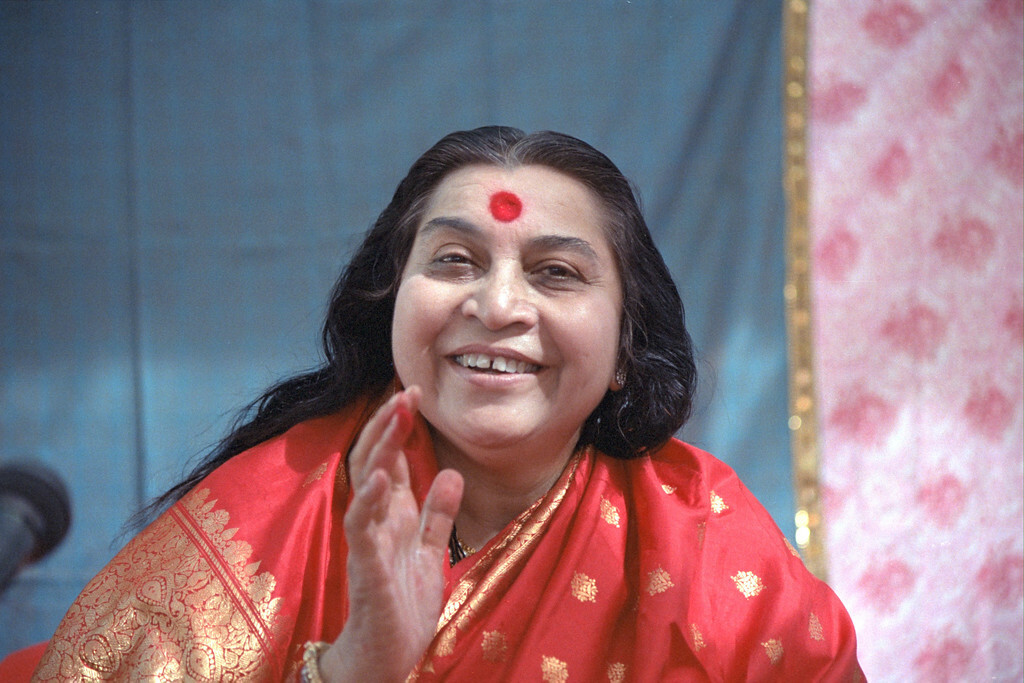“I practice Sahaja Yoga because it completely soothes me down. With Sahaja Yoga, all of the thoughts stop and I’m brought to a place that is nourishing and blissful. Complete silence. Sahaja Yoga brings me to this state, and in this state the heart starts to open up and you experience true love. I found that this love didn’t just last during moments I sat for meditation, but it started to manifest in my everyday life. To be able to feel this love, receive this love and give this love is what motivates me to sit for meditation everyday.” - Andrew Reed, 28, medical student from Chicago, USA.
So you’ve heard about meditation and its huge range of benefits, but how exactly do you meditate? And what even is meditation, really?
We’re here to answer all of your essential questions on what meditation is, how it works and how you can experience it today.
Let’s dive in!
What is meditation?
Meditation can be an ambiguous term, not fully understood by those lacking experience in the practice. And even then, those who have experience with meditation might seem to understand too much. We all have that one friend who meditates who is constantly semi-diagnosing your life using hippie yoga-speak and recommending poses to strengthen your inner chi, perhaps without really knowing what the term means. As a result, meditation has recently come to be seen by some as a trend, a pseudo-spiritual lifestyle choice or ‘what the hipsters are into right now’, rather than anything real.
And then there’s the matter of choosing a type of meditation that ‘suits’ you. But with as many different types of meditation as there are colours in the rainbow, how do you choose? How do you discriminate between so-called 'spiritually-evolved masters' of yoga who are just after your money and those who honestly want your betterment?"
First, let us debunk the myth that meditation is something we can ‘do’. Rather, it is a state that we reach, where the mind is completely silent yet alert. You have to be in meditation, you have to become meditative.
How to start meditating?
Meditation is achieved spontaneously. We can liken entering the state of meditation to the germination of a seed. Rather than something we can make happen or pay for, it occurs naturally, almost on its own.
The same energy that forces that seed out of its shell also lies dormant within each and every one of us. It is the same living energy that makes the trees grow and the flowers bloom.
This energy has been given many different names through time and across cultures: ‘Kundalini’ in Sanskrit, ‘Orenda’ by the indigenous Iroquois of North America, ‘Ruh’ in Islam, ‘Holy Ghost’ in Christianity, and ‘Manitou’ by the indigenous Algonquin tribe.
Lying dormant in three and a half coils in our sacrum bone, at the base of the spine, this motherly energy supports and nourishes the various nervous plexuses (places where nerve endings meet) along the spine. Upon awakening (meditation included below), the Kundalini rises and pierces the fontanelle bone area at the top of the head, gently passing through. This awakening is manifested by a cool breeze that emanates from the top of the head. Meditation - i.e. the state of thoughtless awareness - is brought on by this awakening.
For this process to start working, consider your category of ‘seeking’: If you have ever sought something beyond what you have, or desired to understand the meaning of your existence, let that feeling sit within you for a moment. If you have ever felt that there must be something beyond our sensory-based world, this is the time to kindle that desire.
Lastly, whenever you try to meditate, and before you try the meditation below that will awaken and raise your Kundalini, it is best to take a certain stance towards yourself. Try to be pleasantly placed towards yourself. Just you as you are right now, in this moment.
Easy meditation for beginners
Take your shoes off. Sit comfortably, either cross-legged on the floor or in a chair. Placing your feet on the ground, if you’re sitting on a chair, can be beneficial, as the Earth element is very helpful in meditation.
Sit with your hands open on your lap, palms facing the sky in a gesture of receiving. Your left hand will remain in this position throughout this short meditation, whilst your right hand will be placed on different parts of the body along the left-hand side. [Your hand should move from your left hip, to your left abdomen, to the left side of your heart/chest, to the left side of the neck (where the neck meets the shoulder), to the centre of the forehead, to the back of the head with the head tilted back, and finally, to the centre of the fontanelle bone area (the top of the head) where you will stretch out your hand and fingers and ensure that the centre of the right palm massages the top of the head in a clockwise direction.
At every place where we put the right hand, we will say either a question or an affirmation (a statement asserted with confidence and the belief that it is true) addressed to the energy within, the Kundalini, like our own individual Mother within.
- Place your right hand on the left heart. Ask: Mother, am I the spirit? Ask this 3 times.
- Move your right hand down to the left abdomen. Ask a few times: Mother, am I my own master?
- Place your hand on the lower abdomen on the left-hand side, where the left-hip meets the torso. Here, remember your seeking, and ask, understanding that it is your free will to do so: Mother, please give me pure knowledge.
- Raise your hand to the upper portion of your abdomen, pressing it hard on the left-hand side. With full confidence, say, within your heart: Mother, I am my own master. Say this 10 times.
- Now raise your hand to your heart and say, 12 times, with full confidence: Mother, I am the spirit.
- Place your hand on the left-side of your neck, where the neck meets the shoulder, turn your head to the right and say: Mother, I am not guilty at all. This mothering energy within you is the ocean of peace, the ocean of bliss. You cannot commit any mistake which cannot be dissolved by this ocean of forgiveness.
- Now, without counting who or what you have to forgive, with your right hand placed across the forehead and your head resting on your hand, with an open heart, please say: Mother, I forgive everyone.
- Take your hand and put it on the back of your head, rest your head back on your hand, tilting it upwards, and say, for your own satisfaction: Oh Mother, if I have done any mistakes, please forgive me. Don’t count or think of your mistakes, just affirm.
- Here, again, your freedom is completely respected and the awakening cannot be forced upon you. Stretch your right palm and put the centre of your palm on the top of your head, on the fontanelle bone area and press it, tilting your head forwards, press down here. Move your scalp clockwise 7 times whilst asking with your free will: Mother, please give me my self-realisation.
You might be able to feel your awakened Kundalini energy as a cool or warm breeze coming out the top of your head. If not, or if you are unsure if the awakening of the Kundalini has actually taken place, don’t worry about it too much. As long as you desire a connection with your inner energy, you can trust that, in good time, it will work out. It can be quite subtle at first, and it may be the case that you’ll be able to feel the breeze more strongly after meditating a few times. You can always try it again.
Meditation Techniques and Practice
Sahaja Yoga
Once the Kundalini has been awakened, passing up the spinal cord and piercing through the top of the head, a state of thoughtless awareness can be reached and meditation can begin. This is the aim of practicing Sahaja Yoga.
The practice of Sahaja Yoga is unique. Its name is derived from the Sanskrit language: ‘saha’ meaning ‘with’ and ‘ja’, ‘born’. Yoga, meaning ‘union’, refers to the unification of your true self to the all-pervading power that permeates all elements of life. In essence, Sahaja Yoga means ‘to unite with that which is born within’.
Sahaja Yoga was founded in 1970 by Shri Mataji Nirmala Devi, born as Nirmala Salve in Chindwara, India. Closely observing humanity from an early age, she could see that all human beings are innately seeking something, but most do not know what. Determined to find a way for people to experience true peace within, and thus fulfil their seeking, She developed a unique method of meditation. Shri Mataji spent her life dedicated to the cause of giving en-masse realisation to all seekers of truth, and guiding the practice of Sahaja Yoga meditation thereafter. Her knowledge and guidance was and is still always given completely free of charge.
Learn more about Shri Mataji.
So how do we practice meditation? How do we actually enter into a state of meditation?
Meditation begins when your thoughts cease. One of the aims of Sahaja Yoga is to attain a state of ‘thoughtless awareness’ - a state of full awareness of the present without reflecting or thinking about what is happening around you, what has happened in the past, or what will happen in the future. This state can also be described as the ‘witness state’.
Now, this seemingly-impossible task is definitely attainable once the Kundalini has been awakened. Having passed through the energy centre that controls the activity of our thoughts, our brain, the Kundalini is able to nourish that centre, soothing down any over-activity there. One of the tools you can use to reach this state is to try and watch your thoughts instead of following them. For this we must return to the attention.
Watching your thoughts
If you can put your attention ‘on’ your thoughts rather than ‘in’ them, you will find that it is easier to get into thoughtless awareness. You can imagine this process as if you are watching TV. The TV is your brain with quantities of available channels, your thoughts, waiting to be watched. However, once you realise that you, yourself, are watching the TV, and not inside it, you stop identifying with those thoughts, and start seeing them as things that will eventually fade.
Since thoughts come in waves, you can also start to look for the space between each wave. Although it may be small, like the blink of silence when one channel is changed to the next, you can try to find that space, put your attention there, and it will slowly expand. Interestingly, watching your thoughts, or having your attention on watching your thoughts, can counteract the very waves they come in, sending them into silence.
Affirmations
You can also make use of affirmations to help you get into the witness state (side note: an affirmation is a confident, inner declaration, often used to ground our thoughts, keep us in the present and remind us of what is real). Once you acknowledge that you are thinking, rather than being absorbed by it, you can say inside yourself, “not now, not this”, to help the thought(s) subside and enter into thoughtless awareness.
It is in this silence, in the present moment, where you can see Reality for what it is, unclouded by thoughts, doubts, emotions, etc. This is the ‘witness state’ that is given to you through your Kundalini awakening, which enlightens the brain, in Sahaja Yoga. But do not worry if you cannot achieve this immediately, as you may have achieved it for a few seconds without even realising it. All this will come as you go deeper within yourself and become more practiced in Sahaja Yoga.
Being in the present
Now, you may be reading this because you are interested in meditation for yourself, or perhaps you have friends that are always talking about the benefits of meditation and you want to see what all the fuss is about. Perhaps you want some peace of mind, alleviation from worldly troubles or worries, or maybe you just want to feel comfortable in your own skin. Or, perhaps you can’t quite pin-point the reason but you know you are looking for something, something more, something with meaning. If so, the surest way towards mental and emotional wellbeing, peace of mind, or any spiritual answers that you may be searching for, is living in the present, in the reality of here and now, where no thought exists.
The reason thoughtless awareness is fundamental to meditation is because when we are in our thoughts, we are not in the present. Instead, we are… well… in our thoughts, wherever they may take us. These can build, spiralling out of our control and into worry and anxiety, to say the least. Our thoughts have the capacity to take us into a state outside the present, pulling us into the past or the future as we reflect on events already passed or project our minds into events that have not yet happened. We must remain in reality for our good mental health and general happiness.
Indeed, meditation practices like Mindfulness that encourage ‘mindful’ thinking can never truly lead you to peace, because you will be kept in your thoughts, developing and refining them without being able to overcome them. How will you enter into the present without overcoming and dissolving the thoughts which take you back to the world of yesterday or into the worries of tomorrow?
Which practice is best for me?
Recent research suggests that approximately 200-500 million people now meditate worldwide. Indeed, the ‘meditation market’ is growing and meditation is more popular than it has ever been. However, we need to be able to distinguish what types of meditation are less fruitful than others, and also distinguish those which can cause more harm than good.
A good starting point in developing your own ‘bogus meditation detector’ is whether instructors, meditation types, or businesses ask for money. Thinking back to our seed, can you pay it to germinate? Can you bribe it to life? Like in the natural world, money doesn’t really come into it. Those who run or lead Sahaja Yoga meditation classes do so on a completely voluntary basis. Sahaja Yoga is, and always has been, completely and unconditionally free on the basis that one cannot pay for something which is a birthright.
You might also consider being weary of giving your meditation ‘guru’ or instructor too much precedence over your own experience. You should be the master of your own experience. Of course, you can accept help and advice, but at the end of the day, the experience should be yours. While integrated with the whole natural world, your free will and your Kundalini are still your own and must never be owned, possessed, or dominated by another.
Although you may be wondering about whether you need some kind of qualification to meditate, or apprehensive if this is your first time trying anything like this, Sahaja Yoga is about becoming your own master. Rest assured that there are no levels, qualifications, or hierarchies involved in Sahaja Yoga.
Meditation Exercises
Now, to put all this into practice, here are some short exercises you can try to help you get into a state of thoughtless awareness. Do not worry, there are many natural and helpful tools, such as using the elements, that can help you to achieve a state of meditation. Although this is 100% your own independent journey, you are not in this alone! There are soothing forces of nature out there for our benefit, to help and relieve us, should we choose to use them.
Ether and earth meditation
Works well: outdoors, in any natural environment and helps if you can’t stop thinking (about the future or the past)
The elements all have a particular cleansing effect on our inner subtle system, and can be utilised to bring balance within. The earth element has a strong effect on our emotional activity, while the ether element brings balance to our physical and mental activity.
- Sit comfortably, taking your shoes off and placing your feet on the ground if possible.
- Place your left hand open on your lap with your palm facing the sky and put your right hand towards the earth, palm down, flat on the ground if possible. Say inside yourself:
Mother, you take care of my emotional wellbeing. Please absorb any emotional imbalances within me, any lethargy, anything that I am holding onto from my past. I am fortunate to be under the protection of my Kundalini.
- If any thoughts are coming about your emotions, your past, or from your memory, let them go. Allow them to be absorbed into the Earth element.
- Now place your right hand open on your lap, palm upwards, and raise your left hand to the level of the shoulder, arm bent at the elbow, palm facing behind you and fingertips pointing at the sky.
Mother, you take care of my actions. Please absorb any over-activity within me, any and all overthinking and any worries I may have about the future. I accept that I will be looked after by my Kundalini.
- Place your left hand back on your lap, palm facing upwards and take your attention to your whole spinal cord.
- Take your right hand, making a ‘cup’ shape with it, place it just in front of the base of your spine in front of your body and slowly raise it up along your spine to the top of your head, as if scooping up more strands of the Kundalini.
- Press your right palm on the centre of the top of your head and rotate it clockwise 7 times.
- Allow your attention to rest there as your hand returns to your lap.
- If thoughts come, say: not now, not this and allow everything to fall away.
Breath meditation for beginners
Works well: when you're having trouble bringing your attention inside, or are experiencing heavy emotions.
Pranayama, the exercise of alternation of inhalation and exhalation with retention of the breath, is intended to balance the inner subtle system by balancing our attention and our desires (emotions).
- Sit comfortably, taking your shoes off and placing your feet on the ground if possible.
- Put your attention on your emotions. Try not to go into any single one, just keep your attention on your emotions.
- Breathe in, long and slow. Hold it for a bit.
- Breathe out. Hold your breath out too.
- Now breathe in again.
- Repeat a few times, until there is a gap inbetween your breath. It is in this gap that the kundalini can rise through the top of your head.
- Continue to keep your attention on your emotions as you are breathing.
- Take your right hand, making a 'cup' shape with it, place it just in front of the base of your spine in front of your body and slowly raise it up along your spine to the top of your head.
- Press your right palm on the centre of the top of your head and rotate it clockwise 7 times.
- Allow your attention to rest there as your hand returns to your lap.
If thoughts come, say: not now, not this and listen to the audio below, allowing everything to be blown gently away.
Meditate with Music
Works well: when you have noise or other distractions around you.
Music has long been known to soothe thoughts and subside their activity. Sit comfortably, placing your hand open on your lap, palms facing upwards, and listen to the audio. Allow your attention to be on the music rather than anything else.
Discover music for meditation here.
How to Meditate Properly and Work Through Difficulties
A good way to understand more about meditation, besides practicing it, is through the experiences of others. People have been meditating for aeons, as early as 5,000 BCE, according to some archaeologists, and meditation has also been a key tenet across many different cultures, with religious ties too. Indeed, meditation has long been remedial for humankind across time, but, for your better understanding and relativity, we asked some meditators today a few questions about Sahaja Yoga, why they practice meditation, and how it has helped them. Sahaja Yoga is open to everybody, always and its benefits can be achieved by anyone.
Why do you practice Sahaja Yoga?
“I practice Sahaja Yoga specifically because I feel that it’s very simple and it’s something that since I’ve been meditating, I can find myself spontaneously going into meditation whenever I’m in nature or whenever I’m listening to music that I really like. Or more than ever when I am seeing art or reading something, I am able to see how simply spirituality can be incorporated into everyday life. I definitely think that Sahaja Yoga meditation has given me perspective and its perspective that, along with my own ever-changing perspective, has really helped me to gain a better awareness of who I am as a person, how I can best contribute to society and other people around me.” - Anna Biggs, 22, teacher from Warwickshire, UK
“For me, Sahaja Yoga is the only meditation where we can constantly evolve. It is the practice of living in a state where this can happen that makes Sahaja Yoga so unique.” - Chaitanya Abbott, 27, executive chef from Maharashtra, India
How have you overcome personal difficulties through Sahaja Yoga meditation?
“Before Sahaja Yoga I had many “problems”; years of chronic lower back pain and anxiety, to list a couple. I was going to therapy, doing exercises, trying different diets, etc., but nothing was helping. My attention was constantly entangled with these issues and thus was never relaxed. The moment I experienced the bliss, silence and cool breeze of Sahaja Yoga meditation, I was set free from all the pain and anxiety. It’s been over 4 years and these debilitating issues have yet to return. The only thing I’ve done in my life is making the choice to regularly sit down for meditation and foot-soaking. I’ve found that Sahaja Yoga meditation literally dissolves away all difficulties." - Andrew Reed, 28, medical student from Chicago, USA.
“I used to get very depressed before Sahaja Yoga, swinging in and out of depressive states. But, just like every programme that is malfunctioning needs a reset, Sahaja Yoga is like hitting a reset button, clearing out everything that stops you from feeling joy. Meditation has given me a feeling of lightness in place of the heavy and depressive feelings I was experiencing before.” - Bruno Descaves, 60, artist and puppeteer from Rio de Janeiro, Brazil.
“I grew up with a lot of ups and downs in my family and it felt quite turbulent at times and, even though crazy things were happening around me, I always felt that, when I would turn to meditation, that I was able to feel the stillness and feel the peace within myself, that I didn't need to be afraid or didn't need to feel lost or that I couldn’t go to anyone. Especially at times where I was pretty isolated or that I couldn’t see anyone else, I felt that Sahaja Yoga meditation really helped me to, it was a tool that I could use to calm myself down and get a better perspective and realise that it wasn’t the end of the world.” - Anna Biggs, 22, teacher from Warwickshire, UK.
What are some of the benefits you have felt from practicing Sahaja Yoga?
“Firstly, being able to connect with people on a deeper level is a great benefit that Sahaja Yoga offers. Connection with people is what we are all searching for, ultimately. Another benefit is feeling a sense of openness that comes from when you are not stuck in your head, you can really feel yourself speaking and saying whatever is actually on your heart rather than over-thinking or worrying or having any fears or anxieties. Sahaja Yoga has really helped me with social anxiety but also helped me, through meditation, be a more integrated person, a person who is more aware, who can connect with others. That is what I most enjoy about Sahaja Yoga, to be able to connect with people from across the world who are also on a spiritual journey.” - Anna Biggs, 22, teacher from Warwickshire, UK.
“Sahaja Yoga has given me the tools and guidance to reach a peaceful state where I’m not distracted by thoughts. With the cessation of thoughts, worries and fears, I’m able to appreciate the beauty of the present moment. Freed from my own worries, I’ve also found that my attention is able to go towards others. Sahaja Yoga has allowed me to feel so much love and has taught me how to give love.” - Andrew Reed, 28, medical student from Chicago, USA.
“I have really benefited from spending time in meditation through the practices and techniques that Sahaja Yoga offers. Through meditation, I really feel that I have changed for the better and have enjoyed the peeling back of layers of *****, to expose the revelation of a pure being within.” - Chaitanya Abott, 27, executive chef from Maharashtra, India.
Best Ways to Meditate
The benefits of meditation, as with most things in life, are best felt and can be maintained with consistent effort. The best thing to do is to get into a pattern where you incorporate meditation into your everyday life.
Dedicate a space
If you can, keep a place that you can go that you enjoy that is specifically for you to meditate in. Alternatively, if the weather is nice and you have a garden, you can always sit on the earth, as this will be helpful for your attention in the beginning.
The 21-Day Challenge
You can try the 21-day challenge. Meditate for 10 minutes in the morning, and 10 minutes in the evening, before you go to sleep (using any and all of the meditation exercises above) for 21 days and see if there has been a notable difference in your wellbeing, happiness and calm.
Daily Meditation
Meditating daily is very important because it means that you are not only building on your ability to get into thoughtless awareness and continuing to see what works for you, but also building the strength of your Kundalini.
The Kundalini rises in strands and you want to get more and more strands reaching the top of your head, for a deeper and more integrated connection with your inner Self and the rest of the world. Also, the process of attaining meditation, especially at the beginning, can be likened to an onion, in that you may need to work through some layers (these can be thoughts, your ego, conditionings from the past, difficulties relaxing, etc.), so it’s very important to ‘put in the time’ at the beginning in order to establish meditative patterns and habits within.
Meditations do not need to exceed 10-15 minutes, although you can meditate for however long you want.
Our Top 3 Tips for Meditation
Tip #1: Meditate Anywhere
Whether at home, in a meeting call, or outside of the house, you can enter into the state of meditation. Try this: take your index finger and gently touch the centre of the top of your head. Once you have taken your finger away, you can still feel the sensation of where your finger was, right? Now, just be attentive to that feeling. Whatever happens next, you can still feel that sensation on the top of the head. You just continue on with your day, keeping your attention on the top of your head.
Tip #2: Embrace the Sounds of Life
A common problem for meditators is that, with busy lives, and family members at home, it can be very difficult for people to find a quiet space to meditate. This is a myth. We do not need to restrict our meditations to quiet places. Indeed, doing so might greatly restrict our chances to meditate, such is the hectic world in which we live. Instead, meditation is achievable anywhere, with any background accompaniment. Just accept that this is what you can hear right now, and don’t allow your thoughts to be sucked into it. Although this may not be easy at first, it is actually a matter of ‘detaching’ from those sounds around you by listening to them without getting drawn into or involved with any of them. You can put this to practice by trying the tip above in a noisy environment.
Tip #3: Erase all Expectations
Based on what you’ve read, heard or experienced before, it can be easy to approach any given meditation session with an expectation of how it will or should go. However, meditation is a completely spontaneous and natural process governed by the rising of the kundalini energy within us. While you can express your desire for this energy to rise and keep your attention within, you must ultimately surrender to whatever will happen. Trying to completely control the experience can actually prevent the kundalini from working efficiently, taking away from the mediation experience. The best thing you can do is to allow the kundalini to do its job, and remember that it only acts for your wellbeing.





